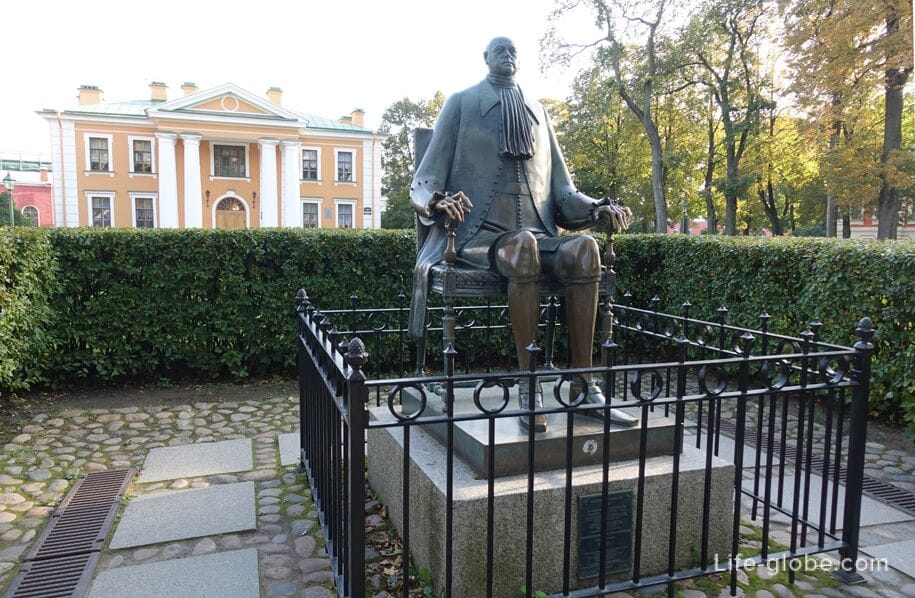
The guardhouse (full name: ober-officer guardhouse) is a historical building located on the territory of the Peter and Paul Fortress (Zayachy Island) in St. Petersburg.
Near the building, in front of it, there is a monument to Peter I.
The Ober-officer guardhouse was built in 1748-1749 to house the Main Garrison Guard and hold the arrested officers and lower ranks. The building had one floor.
In 1906-1907, the building was added to the second floor, presumably designed by military engineer V. F. Asmus. Then the building acquired the neoclassical style.
After 1917 and until 1960, the building belonged to the Leningrad Military District.
Currently, the building houses the directorate of the State Museum of the History of St. Petersburg.
The building has two floors. The main (northern) facade of the guardhouse is decorated in a classical style and is decorated with a monumental four-column portico with a pediment; the corners are rusticated; the walls are painted in yellow-orange with white details.


The territory in front of the guardhouse, which today is a green zone, was named "Dance". This name is associated with the procedure for punishing soldiers - in the 18th century, in the square in front of the guardhouse, there was a post around which sharp spokes were driven into the ground; the whole device was called a "perch". The soldier was tied to a post barefoot, so that his feet reached the spokes; and from the pain, the soldier was often forced to move his feet, which from a distance looked like a dance.
In front of the main facade of the former guardhouse, on the Main Avenue of the Peter and Paul Fortress, which leads from Peter's Gate to the Cathedral Square, there is a bronze monument to Peter I, the work of the sculptor Mikhail Shemyakin.
The monument was erected in 1991.
The prototype of the statue was the death mask of Peter and the "Wax Figure", which were created by B.-K. Rastrelli in 1725 and are now stored in the Museum of St. Petersburg. The State Hermitage Museum in St. Petersburg.
The proportions of the figure of Peter the Great depicted in the monument are non-standard, since the sculptor, creating life-size models of the monument from clay, found out that the figure of Peter turned out to be nondescript - Peter I was represented by a short man. Then the master began to increase the proportions of the body of Peter I, without changing the size of the head (made with a death mask), and thus came to the proportions of Russian icons.
The monument is set on a high pedestal of gray granite and is surrounded by a metal fence. In the sculptural composition, Peter is depicted sitting on a throne. The height of the sculpture is 1.9 meters, and the height of the pedestal is 0.36 meters.
On the side of the pedestal is a brass plaque with the inscription: "To the founder of the Great City of Russia, Emperor Peter the Great, from the Italian Sculptor Carlo Rastrelli and from the Russian Artist Mikhail Shemyakin, 1991, Cast in America." The monument was cast in bronze by Tallix Art Foundry (New York, USA).


The guardhouse and the monument to Peter I are located on the territory of the Peter and Paul Fortress, between the Main Alley and the Nevsky Kurtina (part of the fortress wall) with The Neva Gate, which is also known as the"Gate of Death".
The entrance to the territory of the Peter and Paul Fortress is free (free of charge).
You can also visit the Peter and Paul Fortress with one of the excursions
Nearest metro stations: "Gorkovskaya" and "Sportivnaya".
All accommodation facilities in Saint Petersburg, including in the city center and near the Peter and Paul Fortress, can be viewed and booked here